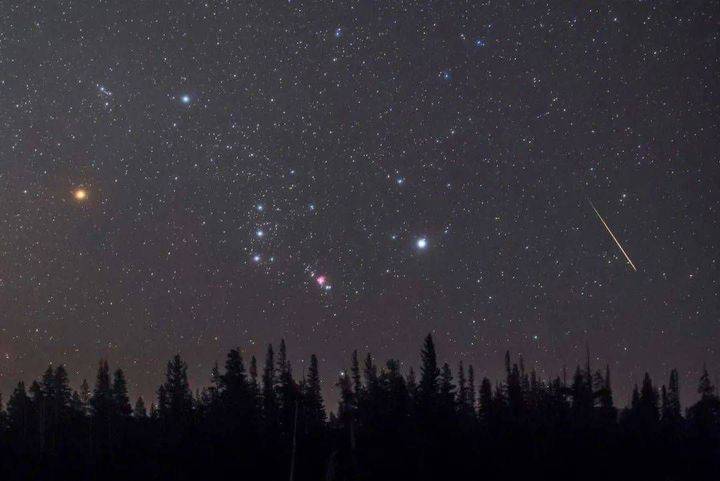Among the stars in the whole night, the brightness of Betelgeuse can be ranked tenth, and the apparent magnitude is 0.5 most of the time, but the brightness of this common large star has changed a lot, especially in the last two years During the period, the brightness of the star changed significantly.
Beginning in the second half of 2021, Betelgeuse will gradually dim. At the darkest moment, the luminosity is only 36% of the usual. There are many explanations for the reason for its dimming, including speculation that Betelgeuse is about to explode with a supernova.
However, starting in the first half of 2022, Betelgeuse began to gradually brighten again, and returned to a normal state around October 2022, but Betelgeuse did not stop brightening because the luminosity returned to normal. It is still continuously getting brighter. In mid-May this year, some astronomical agencies believed that the brightness of Betelgeuse had been brightened by 50% from the normal state, and it was still continuing to brighten. Quad’s brightness varies by more than a factor of 4, which is very rare among bright stars in the whole sky.
You can imagine that the sun is also a star. If the brightness of the sun changes like Betelgeuse, it will be absolutely unbearable for life on earth, so we must be grateful that the earth exists in the habitable zone of the solar system , a star with a very large luminosity change like Betelgeuse should not have a habitable zone at all.
This is because the sun is in the stable period of the main-sequence star stage of stars, and Betelgeuse is a variable star, which is in the final stage of a red supergiant star. The stellar activity is very unstable, sometimes very violent, and sometimes relatively gentle. Observations show that It has a certain activity period, and its luminosity will also change periodically. When the star activity is intense, the luminosity will increase greatly, and when it is calm, the luminosity will be relatively weak.
The mass of Betelgeuse is equivalent to about 11.6~20 times that of the sun. The stage of hydrogen fusion has ended, and the stage of helium flash has long passed. The diameter of Betelgeuse, which has entered the red supergiant stage, is roughly 684~ that of the sun. 1172 times, the volume is about 300 million to 1.6 billion times that of the sun.
If it is placed in the center of the solar system, Mercury, Venus, Earth and Mars can only orbit inside this star, and even the orbit of Jupiter will be swallowed by it.
Now there is a high probability that the fusion of heavy elements below iron is going on inside Betelgeuse. When it starts to fuse iron elements, it will explode as a supernova and then become a neutron star.
There is no particularly accurate data on the distance of Betelgeuse from our solar system. The estimated distance is between 200 and 740 light-years, and it is generally believed to be about 640 light-years.
The difference in brightness in two years is more than 4 times. Is Betelgeuse really going to have a supernova explosion? If Betelgeuse really undergoes a supernova explosion, its luminosity will increase hundreds of thousands of times, and it seems to us that it will catch up with the brightness of the moon. Some astronomers estimate that after Betelgeuse explodes, it will be at its brightest The brightness can even reach 3 times that of the full moon (apparent magnitude -12.4) seen from the earth, and it can be seen even in daytime.
Some people even speculate that when it is brightest, its apparent magnitude can reach -17, which is more than a hundred times the brightness of the full moon.
And if one of the two poles is facing the direction of the earth when it erupts, then its gamma-ray burst will come to the earth hundreds of years later, and these high-energy photons will excite the aurora phenomenon in the earth’s atmosphere just like the solar wind.
However, the existing theoretical knowledge of astronomy is not enough to accurately predict the supernova explosion of stars in terms of time. Therefore, although we know that Betelgeuse is not far away from the supernova explosion, we cannot accurately determine the explosion time. It has It may have erupted, or it may continue to exist for a million years.




GIPHY App Key not set. Please check settings